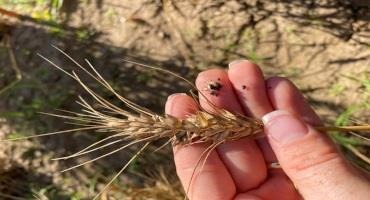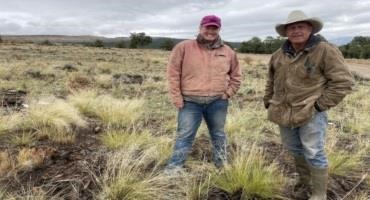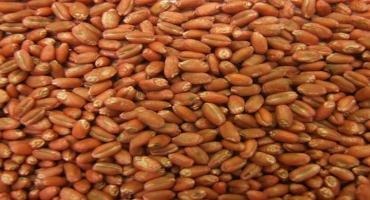Common bunt is also referred to as “stinking smut” because of the foul, fishy odor produced by the fungus. The tough, black spores “stick” the surface of otherwise healthy seed and can infect plants after emergence (if seed treatments are not used). This disease then remains “silent” within plants (no symptoms) until grain fill, when the starch within grain is completely replaced with black spores (Figure 2). These spores can be released during harvest, contaminating the entire grain or seed lot.

Figure 2. Common bunt is only visible when seed is broken open after grain fill. Heads can look otherwise healthy. Photo: Kelsey Andersen Onofre, K-State Research and Extension.
Other seed-borne diseases to keep in mind for 2021
There are other reasons why fungicide seed treatments are particularly warranted for the 2022 season. We saw higher than usual amounts of Fusarium head blight in parts of the state that typically do not see this disease. Although Fusarium head blight is a result of fungal inoculum in residue during flowering, seed that was infected with the fungus that causes Fusarium head blight can cause a seedling blight and can reduce stand after planting. Therefore, seed lots that had some levels of “scabby” kernels from a Fusarium head blight infection should be prioritized for seed treatment to ensure good stand establishment. In addition, this year we saw higher than usual loose smut (Figure 3) which, although it doesn’t cause quality loss, can reduce overall yield.

Figure 3. Classic symptoms of loose smut. Spores will no longer be present at harvest. Photo: Kelsey Andersen Onofre, K-State Research and Extension.
Tips for product selection
For more information about common seed treatment products and their effectiveness for the control of the diseases mentioned in this article please see Seed Treatment Fungicides
for Wheat Disease Management: https://bookstore.ksre.ksu.edu/pubs/mf2955.pdf. All products listed in this publication are labeled for the suppression or control of common bunt. This is due to the presence of a mode of action group 3 fungicide or “triazole” fungicide in each of these products (tebuconazole, difenoconazole, prothioconazole, etc.). It is recommended that seed treatments with a minimum of one product within this mode of action of fungicides are selected. In addition to product selection, it is essential to have good seed coverage (Figure 4) for optimal control. Seed treatments failures can sometimes be traced back to inadequate coverage.

Figure 4. Wheat seed with very good seed treatment coverage. Photo: Bill Bockus.
Source : ksu.edu